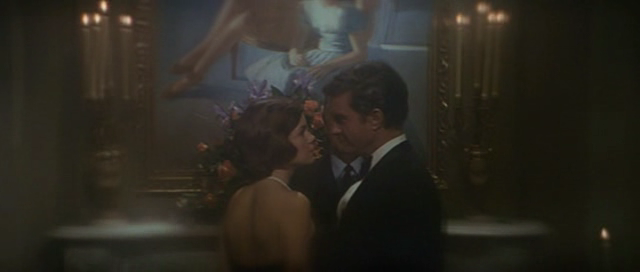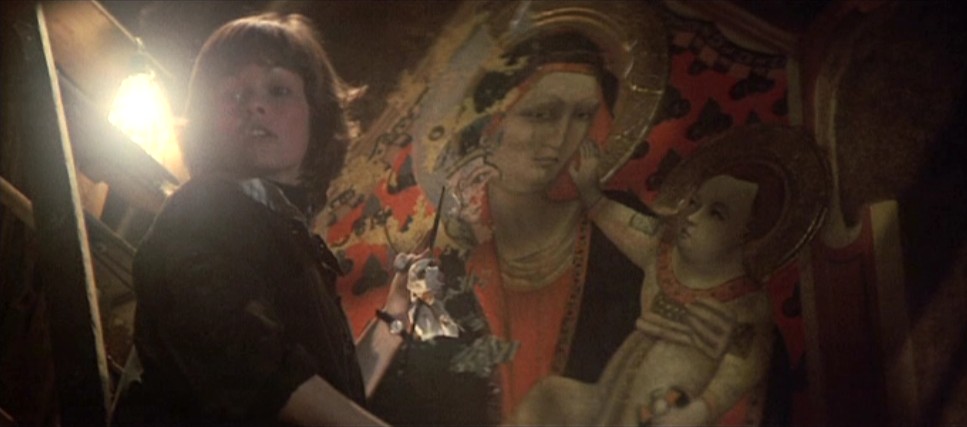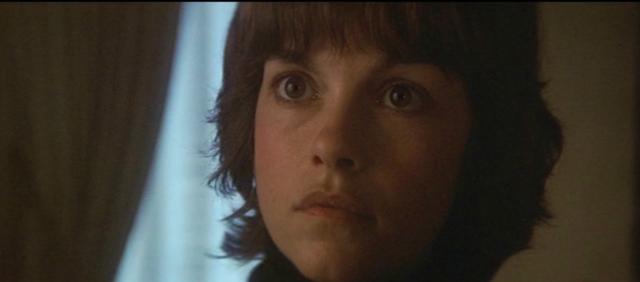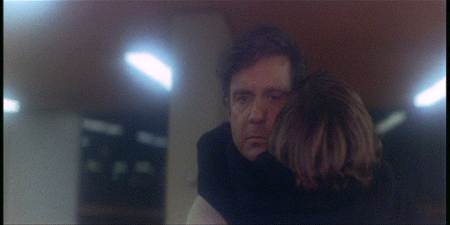From the October 1976 issue of Monthly Film Bulletin (vol. 43, no. 513.
Obsession
U.S.A., 1976
Director: Brian De Palma
Pondering over her restoration work in a Florence cathedral, Sandra (Geneviève Bujold) wonders aloud to Michael (Cliff Robertson) whether she should risk removing a painting’s surface to see what lies beneath it, or else restore only the first layer. “Hold on to it”, Michael replies, giving voice not only to his surface obsession but to De Palma’s cool strategy –- to reconstruct or “restore” the mood and manner of Hitchcock’s Vertigo some eighteen years after the fact without worrying too much about the reasons or impulses underlying them. An effective variant on the director’s earlier Sisters — with mother and daughter taking over the symmetrical “mirror” pattern formerly established by Siamese twins, and diverse echoes of Vertigo, Rebecca, Dial M for Murder, and Marnie assuming much the same function here as Rear Window and Psycho did in the earlier film — Obsession also resurrects some of Hitchcock’s most visible characteristics (tight plot construction, extended doppelgänger effects, precise control of point-of-view) while blithely neglecting others (above all, humor and a consistent moral position). What results is a lot closer to the pure engineering of a Spielberg or a Friedkin than to the “personal” nostalgia of a Truffaut or a Bogdanovich, revealing a cleanly constructed mechanism whose limitations are merely the reverse of its expediency (as in the outlandishly contrived scene where Robert improbably exposes his deceptions to Michael, a move dictated more by the spectator’s needs than those of either character). Apart from its obvious pastiche elements, Obsession is striking mainly for what it manages to get away with on its own rather narrow terms: a repeated shot of Geneviève Bujold during the Marnie-like flashback successfully uses one actress to bridge a physical and emotion distance of sixteen years, and the unexpected “happy” incestual ending — conveyed in endless 360° camera movements around the lead couple, expanding a subtler romantic effect in Vertigo into pure pirouette and pyrotechnics –- makes limited sense while remaining quite adequate to the film’s schematic design. Interestingly enough, the latter comprises a female “wish fulfillment” fantasy at least as much as a male one, and by sailing off into the equivalent of pure metaphysics, it seems quite similar to the fanciful conclusion of Schrader’s Taxi Driver script, which capitulates to dreams that are equally narcissistic and isolated (at least in terms of verisimilitude) from the main body of the film. Reportedly, it was Bernard Herrmann who suggested to De Palma that he drastically abridge Schrader’s original script (which extended the hero’s obsession well into the 1980s before “resolving” it in a like manner), and there is every reason to suspect that the late composer’s instincts were right; the 98 minutes of Obsession could hardly be stretched into the 120 of Vertigo without severe risk of monotony. And if the current film seems to differ most sharply from its source in its self-conscious awareness of its own deliberations (one does not feel that De Palma, like Hitchcock, is ever working close to his unconscious), it remains seductive chiefly thanks to Herrmann’s rich and affecting score. It is a fitting tribute to the composer that in his last film score to be released –- drawing heavily on former work with Hitchcock -– his music guides, inflects, and shapes the narrative’s action more decisively than the mise en scène, the acting, or even the script, implying that Herrmann may indeed deserve consideration as the true auteur of the film, while De Palma, Schrader, Robertson and Bujold mainly serve as dutiful executors and illustrators.
—Monthly Film Bulletin, October 1976




